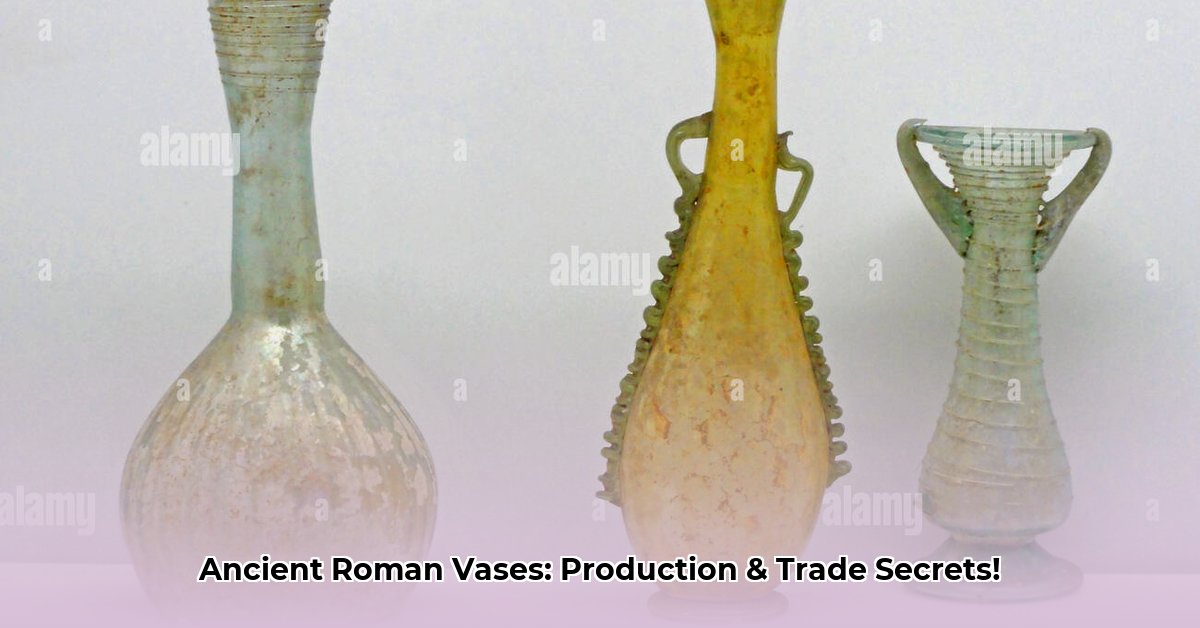While the intricate artistry of ancient Greek vase painting often captures immediate attention, the expansive and indispensable world of Roman ceramic production offers an equally compelling narrative about daily life, sophisticated trade networks, and remarkable industrial innovation. Far from being mere utilitarian objects, Roman pottery—from luxurious dining ware to robust transport containers—serves as an invaluable archaeological lens, revealing the intricate workings of one of history’s most influential and enduring civilizations. Unlike the Greeks and Etruscans, who heavily emphasized painted decorative ceramics, the Romans prioritized mass production, standardization, and the widespread utility of their pottery, adapting it to every facet of their vast empire. This guide delves into the distinctive categories of Roman ceramic production: fine wares and coarse wares, exploring their manufacture, distribution, and enduring legacy. You can read more about Roman artifacts here.
Fine Wares: Elegance and Status on the Roman Table
Fine wares represented the more refined segment of Roman pottery, meticulously crafted for dining, serving, and display. These vessels, often characterized by slender forms, elegant shapes, and lustrous surfaces, were more than just utensils; they were subtle yet powerful statements of social standing and aesthetic taste. Their widespread use, even among ordinary citizens, reflects a society that valued both practicality and a degree of sophistication in its domestic sphere. However, as the Roman Empire flourished, the elite increasingly turned to more sumptuous materials like fine silver and exquisite glass for their tableware, leading to a gradual decline in the artistic quality of fine pottery from the 3rd century CE onwards.
The most celebrated example of Roman fine ware is Terra Sigillata, famously known as Arretine ware. Flourishing primarily from around 30 BCE to 30 CE in Arretium (modern Arezzo, Italy), this pottery gained renown for its distinctive, vibrant red slip—a fine, highly refined clay coating that produced a glossy, almost metallic sheen upon firing. Its deep red glaze with decorative figures in low relief became highly characteristic.
The production of such high-quality Arretine ware involved specific, advanced techniques, organized along industrial lines to produce highly standardized products:
- Mold Creation: Master artisans created intricate molds, typically from fired clay, which were often impressed with stamps or punches. These molds allowed for the rapid reproduction of detailed relief decorations, ranging from delicate floral motifs and lively animal figures to complex mythological scenes, gladiatorial combat, and everyday life tableaus. This systematic approach ensured consistency and enabled unprecedented mass production for its time.
- Formation and Finishing: Fine, carefully prepared clay was pressed into these pre-decorated molds, capturing the intricate decorative elements. After removal from the mold, the vessels were coated with the signature red slip and then fired in specialized kilns at high temperatures to achieve their characteristic hard, glossy finish.
- Regional Evolution and Diffusion: As Arretine production eventually centralized and then decentralized, other regions across the Roman Empire rapidly adopted and adapted these innovative techniques. Gaulish workshops, for instance, became significant producers of terra sigillata, often achieving an even denser, shinier finish than their Italian predecessors, with colors spanning from a lighter orange to an intense crimson. Later, North Africa emerged as another major center, producing African Red Slip (ARS) ware, which, while maintaining the characteristic red hue, typically featured a more understated, reddish-orange slip. This widespread adoption and regional adaptation of similar techniques across diverse provinces underscore the profound cultural diffusion and interconnectedness facilitated by the Roman Empire.
Coarse Wares: The Foundation of Roman Daily Life and Extensive Commerce
In stark contrast to the refined fine wares, coarse wares formed the robust, utilitarian backbone of Roman society. These sturdy, unrefined, and often undecorated vessels were indispensable for virtually every aspect of daily life, from fundamental tasks like cooking and long-term food storage to the large-scale transport of goods across vast distances. Crafted from more common, durable clays and manufactured in enormous quantities, they fulfilled the fundamental necessities of a vast and growing population, embodying the Roman emphasis on efficiency, reliability, and widespread availability. They were inexpensive, quick to produce, and generally lacked decoration, with functionality being the overriding priority.
Perhaps the most iconic example of Roman utilitarian pottery is the amphora. These distinctive, two-handled ceramic jars were the primary vessels for shipping bulk commodities across the immense Roman Empire. Wine, olive oil, and garum (a highly prized fermented fish sauce), grains, and other foodstuffs were just a few of the bulk goods that crisscrossed the Mediterranean and beyond in these sturdy containers. Each amphora was often designed with specific contents and origins in mind, reflecting the specialized and interconnected nature of ancient Roman trade.
To facilitate efficient trade and compact storage, amphorae typically featured a curved body, two cylindrical handles, a flared rim, and a characteristic spiked foot. This pointed base was not merely decorative; it allowed the jars to be uprighted and nested securely in the holds of ships or, when empty, stacked neatly in storage facilities, maximizing precious space. The German archaeologist Heinrich Dressel famously developed a comprehensive classification system in the 19th century, identifying forty-five distinct forms of amphorae. By studying the shape of the vessel in conjunction with any potter’s stamps or Tituli Picti—painted inscriptions designating origin, contents, destination, or manufacturer—Dressel and subsequent archaeologists were better able to determine who produced and used the vessel and for what purpose. Indeed, these seemingly simple containers provide crucial insights into Roman commercial strategies, revealing how a vast empire managed its complex supply chains with remarkable efficacy. The sheer scale of amphora use is vividly demonstrated at Monte Testaccio, a colossal ancient waste mound in Rome composed almost entirely of broken amphorae, primarily from Spanish olive oil imports.
Beyond Vases: Diverse Roman Ceramic Creations
The scope of Roman ceramic production extended far beyond tableware and transport vessels, touching almost every aspect of daily life, infrastructure, and even ritual. The versatility of clay, readily available and easily malleable, allowed for an astonishing array of objects vital to both private and public spheres.
Roman lamps, for instance, typically molded for mass production, illuminated homes, public spaces, and religious sites. Their surfaces frequently featured low-relief motifs, including pagan deities, mythological narratives, gladiatorial scenes, everyday life vignettes, and later, Christian symbols. Terracotta figurines, often inspired by Greek and Egyptian styles, were locally produced throughout the Roman world and served ritualistic, religious, or decorative purposes within homes and shrines. Skilled coroplasts (clay sculptors) even rendered life-sized figures in clay where marble was scarce.
Furthermore, bricks and tiles were foundational to Roman architecture, forming the very fabric of their cities, from monumental public buildings to private homes. These essential building materials were often stamped with marks indicating their origin, providing valuable data for modern archaeologists studying ancient construction techniques and supply chains. Roman engineers also innovatively applied ceramics to complex systems like the hypocaust, an advanced underfloor heating system, and sophisticated drainage pipes, demonstrating the Romans’ ingenious application of readily available materials to enhance daily comfort and public health. This broad and innovative application underscores the centrality of ceramic technology in Roman innovation, daily existence, and imperial infrastructure.
Unlocking the Past: The Archaeological Value of Roman Pottery
The true significance of ancient Roman pottery extends far beyond its original function. For archaeologists and historians, these seemingly humble artifacts are powerful archaeological dating tools and crucial indicators of ancient trade, consumption patterns, cultural diffusion, and social hierarchies. The specific shape of a pot, the presence of an artisan’s stamp, the style of decoration, or the elemental composition of the clay can provide precise clues about a site’s chronology and its connections to wider economic networks. Pottery’s enduring nature, even in fragmented form, makes it an unparalleled resource.
Modern science has revolutionized the analysis of these ancient remains. Multi-method authentication provides robust verification of pottery’s age and origin, offering unparalleled precision:
- Thermoluminescence (TL) Dating: This technique is a pivotal tool for dating fired clay. When pottery is originally fired in a kiln, its internal “radioactive clock” is reset, clearing any previously stored energy. Over time, the clay absorbs radiation from its surrounding environment, storing this energy within its crystalline structure. Reheating a pottery sample in a controlled laboratory environment releases this trapped energy as light (thermoluminescence). By precisely measuring the intensity of this emitted light, archaeologists can estimate the time elapsed since the pottery was originally fired, typically with an accuracy of +/- 10-25%, making it highly effective for ceramic artifacts where other dating methods like carbon-14 are unsuitable.
- X-Ray Fluorescence (XRF) Analysis: This non-destructive analysis technique uses X-rays to determine the precise elemental composition of the ceramic material. By bombarding the pottery with X-rays and analyzing the characteristic secondary X-rays emitted by the atoms in the clay, XRF generates a unique “chemical fingerprint.” This specific elemental composition can then be meticulously compared with elemental profiles of known clay sources from different geographical regions, helping to pinpoint the pottery’s exact origin and meticulously trace ancient trade routes and production centers.
- X-Ray Imaging: Similar to medical X-rays, this method allows archaeologists to peer inside the pottery, revealing internal structures, hidden cracks, previous repairs, or manufacturing defects that are invisible to the naked eye. X-ray imaging is invaluable for identifying modern forgeries, which might incorporate ancient shards with more recently added sections, or reveal previously undetected historical restoration efforts, providing crucial authentication insights.
By combining these advanced scientific approaches with traditional archaeological typological and stratigraphical methods, researchers gain a comprehensive understanding, allowing them to verify authenticity, map economic networks, and meticulously reconstruct intricate historical narratives. Given the sheer volume and widespread distribution of Roman pottery, it remains an unparalleled resource for deciphering the complex tapestry of Roman civilization, illuminating everything from the daily meals of ordinary citizens to the grand logistics of an empire. Each fragmented piece contributes to a larger, unfolding story of human ingenuity, connectivity, and cultural evolution.
The Enduring Legacy of Roman Ceramics
The profound impact of Roman ceramic production resonates through history, significantly influencing later ceramic production methods and archaeological practices. Their embrace of standardization, industrial-scale manufacturing, and mass production techniques, particularly through the clever use of molds, set precedents that would be echoed for centuries in various industries. The meticulous study of these Roman artifacts continues to yield fresh historical insights, highlighting the Romans’ ingenuity, resourcefulness, and their systematic, pragmatic approach to both daily life and grand imperial ambitions. The vast quantities of pottery recovered from sites across Europe, North Africa, and the Near East stand as an enduring testament to their pervasive presence and critical role in shaping one of the greatest civilizations known to history. Ultimately, ancient Roman pottery is far more than just “old pots”; it is a tangible, invaluable window into the economic, social, and technological prowess of a truly remarkable ancient society.















